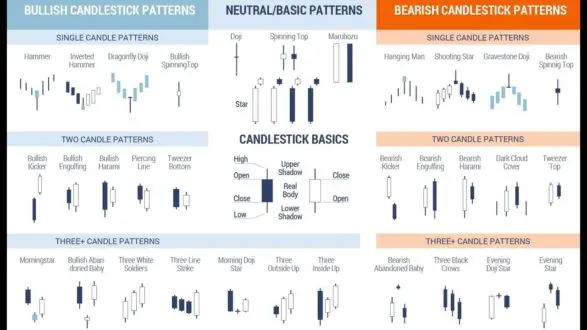by Steve Selengut
One of the biggest mistakes investors make is to ignore the “income purpose” portion of their investment portfolios, and many don’t even realize that there should be such a thing. The second biggest mistake is to examine the performance of income securities in the same manner as they do “growth purpose” securities (equities).
The following Q & A assumes that portfolios are built around these four great financial risk minimizers:
• All securities meet high quality standards, produce some form of income, are “classically” diversified, and are sold when “reasonable” target profits are achieved.
1. Why should a person invest for income; aren’t equities much better growth mechanisms?
Yes, the purpose of equity investments is the production of “growth”, but most people think of growth as the increase in market value of the securities they own. I think of growth in terms of the amount of new “capital” that is created by the realization of profits, and the compounding of the earnings when that new capital is reinvested using “cost based” asset allocation.
Most advisors don’t view profits with the same warm and fuzzy feeling that I do… maybe it’s a tax code that treats losses more favorably than gains, or a legal system that allows people to sue advisors if hindsight suggests that a wrong turn may have been taken. Truth be told, there’s no such thing as a bad profit.
Most people wouldn’t believe that, over the last 20 years, a 100% income portfolio would have “outperformed” all three of the major stock market averages in “total return”… using as conservative an annual distribution number as 4%: The per year percentage gains:
NASDAQ = 1.93%; S & P 500 = 4.30%; DJIA = 5.7%; 4% Closed End Fund (CEF) portfolio = 6.1%
• NOTE: during the past 20 years, taxable CEFs have actually yielded around 8%, tax frees, just under 6%… and then there were all the capital gains opportunities from 2009 through 2012.
Try looking at it this way. If your portfolio is generating less income than you are withdrawing, something must be sold to provide the spending money. Most financial advisors would agree that no less than 4% (payable in monthly increments) is needed in retirement… without considering travel, grandkids’ educations and emergencies. This year alone, most of that money had to come from your principal.
• Similar to the basic fixed annuity program, most retirement plans assume an annual reduction of principal. A “retirement ready” income program, on the other hand, leaves the principal for the heirs while growing the annual spending money for the retirees.
2. How much of an investment portfolio should be income focused?
At least 30% for anyone under 50, then a growing allocation as retirement looms larger… portfolio size and spending money requirements should dictate how much of the portfolio can be at risk in the stock market. Typically, no more than 30% in equities for retirees. Very large portfolios could be more aggressive, but isn’t true wealth the knowledge that you no longer have to take significant financial risks?
As an extra added safety measure, all equity investments should be in Investment Grade Value Stocks and a diversified group of equity CEFs, thus assuring cash flow from the entire portfolio, all of the time. But the key from day one is to make all asset allocation calculations using position cost basis instead of market value.
• NOTE: When equity prices are very high, equity CEFs provide significant income and excellent diversification in a managed program that allows stock market participation with less risk than individual stocks and significantly more income than even income mutual funds and income ETFs.
Using total “working capital” instead of current or periodic market values, allows the investor to know precisely where new portfolio additions (dividends, interest, deposits and trading proceeds) should be invested. This simple step will guarantee that total portfolio income increases year over year, and accelerates significantly toward retirement, as the asset allocation itself becomes more conservative.
• Asset allocation should not change based on market or interest rate prognostications; projected income needs and retirement ready financial risk minimization are the primary issues.
3. How many different types of income securities are there.
There are a few basic types, but the variations are many. To keep it simple, and in ascending order of risk, there are US Government and Agency Debt Instruments, State and Local Government Securities, Corporate Bonds, Loans and Preferred Stock. These are the most common varietals, and they generally provide a fixed level of income payable either semi-annually or quarterly. (CDs and Money Market Funds are not investments, their only risk being the “opportunity” variety.)
Variable income securities include Mortgage Products, REITs, Unit Trusts, Limited Partnerships, etc. And then there are a myriad of incomprehensible Wall Street created speculations with “traunches”, “hedges”, and other strategies that are much too complicated to understand… to the extent necessary for prudent investing.
Generally speaking, higher yields reflect higher risk in individual income securities; complicated maneuverings and adjustments increase the risk exponentially. Current yields vary by type of security, fundamental quality of the issuer, length of time until maturity, and in some cases, conditions in a particular industry… and, of course IRE.
4. How much do they pay?
Short term interest rate expectations (IRE, appropriately), stir the current yield pot and keep things interesting as yields on existing securities change with “inversely proportional” price movements . Yields vary considerably between type, and right now are between below 1% for “no risk” money market funds to 10% for oil & gas MLPs and some REITs.
Corporate Bonds are around 3%, preferred stocks around 5%, while most taxable CEFs are generating close to 8%. Tax free CEFs yield an average of about 5.5%.
• Quite a spread of income possibilities, and there are investment products for every investment type, quality level, and investment duration imaginable… not to mention global and index opportunities. But without exception, closed end funds pay significantly more income than either ETFs or Mutual Funds… it’s not even close.
All types of individual bonds are expensive to buy and to sell (mark ups on bonds and new issue preferreds do not have to be disclosed), particularly in small quantities, and it is virtually impossible to add to bonds when prices fall. Preferred stocks and CEFs behave like equities, and are easy to trade as prices move in either direction (i.e., it’s easy to sell for profits, or buy more to reduce cost basis and increase yield).
• During the “financial crisis”, CEF yields (tax free and taxable) almost doubled… nearly all could have been sold more than once, at “one-year’s-interest-in-advance” profits, before they regained normal levels in 2012.
5. How do CEFs produce these higher income levels?
There are several reasons for this great differential in yields to investors.
• CEFs are not mutual funds. They are separate investment companies that manage a portfolio of securities. Unlike mutual funds, investors buy shares of stock in the company itself, and there is a finite number of shares. Mutual funds issue unlimited numbers of shares whose price is always equal to the Net Asset Value (NAV) of the fund.
• The price of a CEF is determined by market forces and can be either above or below the NAV… thus, they can, at times, be purchased at a discount.
• Income mutual funds focus on total return; CEF investment managers focus on producing spending money.
• The CEF raises cash through an IPO, and invests the proceeds in a portfolio of securities, most of the income from which will be paid in the form of dividends to shareholders.
• The investment company may also issue preferred shares at a guaranteed dividend rate well below what they know they can obtain in the market. (e.g., they could sell a callable, 3% preferred stock issue, and invest in bonds that are paying 4.5%.)
• Finally, they negotiate very short term bank loans and use the proceeds to buy longer term securities that are paying a greater rate of interest. In most market scenarios, short term rates are much lower than long term, and the duration of the loans is as short as the IRE scenario will permit…
• This “leverage borrowing” has nothing to do with the portfolio itself, and, In crisis conditions, managers can stop the short term borrowing until a more stable interest rate environment returns.
Consequently, the actual investment portfolio contains significantly more income producing capital than that provided by the IPO proceeds. Shareholders receive the dividends from the entire portfolio. For more, read my “Investing Under The Dome” article.
6. What about Annuities, Stable Value Funds, Private REITs, Income ETFs, & Retirement Income Mutual Funds
Annuities have several unique features, none of which make them good “investments”. They are excellent security blankets if you don’t have enough capital to produce adequate income on your own. The “variable” variety adds market risk to the equation (at some additional cost), bastardizing original fixed amount annuity principles.
• They are “the mother of all commissions”.
• They charge penalties that, in effect, lock up your money for up to ten years, dependent on the size of the commission.
• They guarantee a minimal interest rate that you receive as they give you back your own money over your “actuarial life expectancy” or actual lifetime, if it is longer. If you get hit by a truck, the payments stop.
• You can pay extra (i.e., reduce your payments) to either benefit others or to assure that your heirs get something when you die; otherwise, the insurance company gets the entire remainder regardless of when you check out of the program.
Stable Value Funds assure you of the lowest possible yield you can obtain in the fixed income market:
• They include the shortest duration bonds to limit price volatility, so in some scenarios, they could actually yield less than Money Market Funds. Those that have slightly higher yielding paper include an insurance “wrapper” that assures price stability, at additional cost to the investor.
• They are built to reinforce the misguided Wall Street emphasis on market value volatility, the harmless and natural personality of interest rate sensitive securities.
• If money market rates ever return to “normal”, these bad joke products will likely disappear.
Private REITs are “the father of all commissions”, illiquid, mystery portfolios, far inferior to the publicly traded variety in a number of ways.
Take the time to read this Forbes article: “An Investment Choice To Avoid: The Private REIT” by Larry Light.
Income ETFs & Retirement Income Mutual Funds are the second and third best ways to participate in the fixed income market:
• They provide (or track the prices of) diversified portfolios of individual securities (or mutual funds).
• ETFs are better because they look and feel like stocks and can be bought and sold at any time; the obvious downside of most is that they are built to track indices and not to produce income. A few that seem to produce above a meager 4% (merely for information and absolutely not a recommendation) are: BAB, BLV, PFF, PSK, and VCLT.
• As for Retirement Income Mutual Funds, the most popular of all (the Vanguard VTINX) has a 30% equity component and yields less than 2% in actual spending money.
• There are at least one hundred “experienced” tax free and taxable income CEFs, and forty or more equity and/or balanced CEFs that pay more than any income ETF or Mutual Fund.
Read: “The Book That Wall Street Does Not Want You To Read”
My articles always describe aspects of an investment process I have been using since the 1970’s, as described in my book, “The Brainwashing of the American Investor”. All the disciplines, concepts, and processes described therein work together to produce (in my experience) a safer, more income productive, investment experience. No implementation should be undertaken without a complete understanding of all aspects of the process.
If you are not a pro or a guru yet; here are some highly recommended
legitimate resources which could be helpful to you... (A) learn to earn
(B) build business (C) earn your cash back (D) easy surveys for you
(E) everything you need to run your business for free





